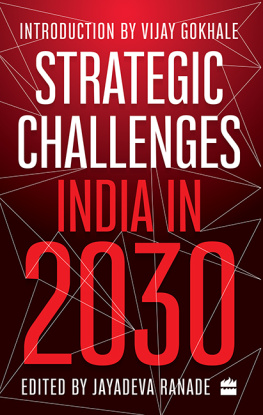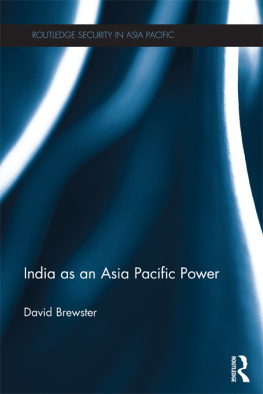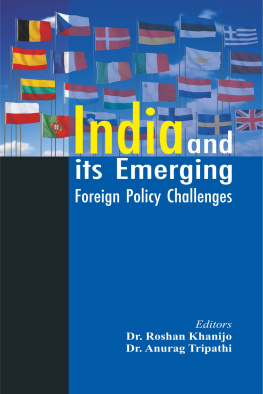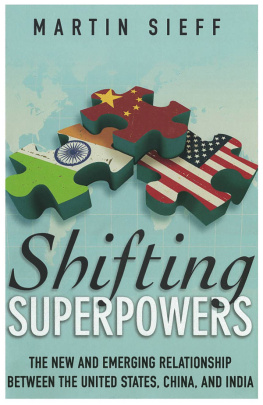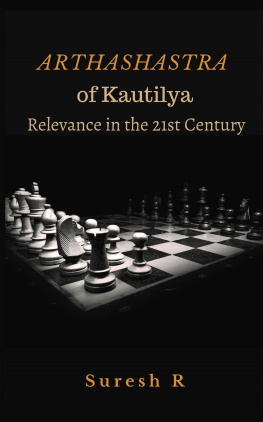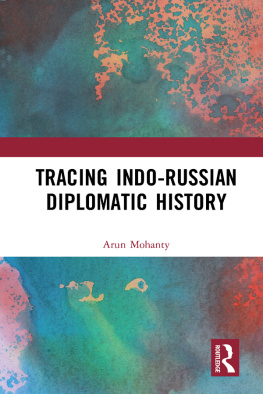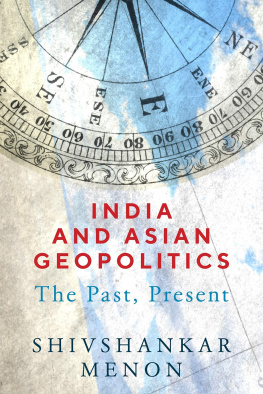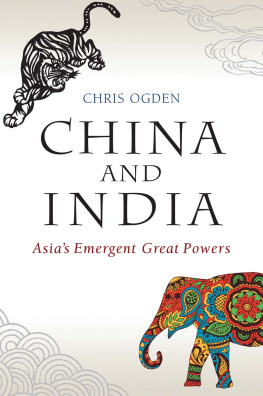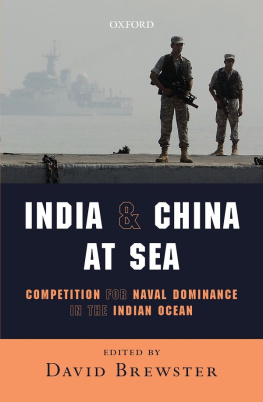Table of Contents
- Introduction
VIJAY GOKHALE - Chinas Major Strategic Threats to India till 2035
JAYADEVA RANADE - Pakistan: The Inevitability of Enmity
VIKRAM SOOD - Security Challenges: IndiaUS Relations
ARUN SINGH - Russia and Eurasia in Indias Calculus
P.S. RAGHAVAN - Old Wars, New Wars: Strategizing for Future Land Warfare
RAKESH SHARMA - Aerospace: A Security Perspective
RAGHUNATH NAMBIAR - Trajectory of Indias Maritime Security Challenges
SHEKHAR SINHA - Emerging and Disruptive Technologies
PRABHAT RANJAN - ChinaIndia Riparian Relations: Upstream
Downstream Dynamics
UTTAM KUMAR SINHA - The Sky Above and the Air Around
New Domains of Contention: In Cyber and Outer Space
KIRAN KARNIK


To the people of India
Contents
Introduction
VIJAY GOKHALE
Chinas Major Strategic Threats to India till 2035
JAYADEVA RANADE
Pakistan: The Inevitability of Enmity
VIKRAM SOOD
Security Challenges: IndiaUS Relations
ARUN SINGH
Russia and Eurasia in Indias Calculus
P.S. RAGHAVAN
Old Wars, New Wars: Strategizing for Future Land Warfare
RAKESH SHARMA
Aerospace: A Security Perspective
RAGHUNATH NAMBIAR
Trajectory of Indias Maritime Security Challenges
SHEKHAR SINHA
Emerging and Disruptive Technologies
PRABHAT RANJAN
ChinaIndia Riparian Relations: Upstream
Downstream Dynamics
UTTAM KUMAR SINHA
The Sky Above and the Air Around
New Domains of Contention: In Cyber and Outer Space
KIRAN KARNIK
W ith this compendium, Strategic Challenges: India in 2030, a piece of literature has been crafted that exposes the various eminent as well as imminent threats India could face during the present and the next pivotal decades. The book, however, differs greatly from other publications in that it not only describes such challenges, but also provides potential responses and solutions that will help India plan to tackle such threats head-on. Such problem-solving approaches not only serve to elevate the book to a great read but, more importantly, make it a crucial guide to current and future policies as well as actions to be taken by Indias political elite.
Indian experts from a wide range of fields and with centuries of cumulative on-the-ground operational knowledge were involved in this endeavour focused on a comprehensive overview of security threats arising from a variety of different spheres, such as the aerospace, marine and land-based security domains. In this way, the book undoubtedly achieves the rare feat of providing a 360-degree perspective on Indias current and future strategic security realities.
Moreover, the present book comes at a critical juncture for India in a rapidly changing geopolitical scenario in which the subcontinent is increasingly becoming a key player on the international security arena. In my long career, I have found that it takes a great deal of intuition, tact and sensitivity to come up with the right idea and initiative at the right time. That this has been achieved so flawlessly in the case of the present publication is self-evident and deserves all the plaudits.
I am particularly honoured to have had the opportunity, in my capacity as the resident representative to India of the Konrad-Adenauer-Foundation (Konrad-Adenauer-Stiftung [KAS]), to closely accompany the genesis of the book, for it expresses accurately the message that the Konrad-Adenauer-Foundation has been exhorting for decades: namely, that it is only through the diverse forms of multilateral cooperation and partnerships that cohesion between our like-minded democracies can strengthen the institutions of multilateralism to jointly promote security, prosperity and stability in the Indo-Pacific and the rest of our planet.
In this sense, we can view this publication as a tribute to the cooperative spirit of deeply devoted and concerned individuals whose profound analytical insights will serve as a valuable tool to support visionary policymaking aimed at India playing an increasingly global and multilateral role in the decades to come.
Peter Rimmele
India Office of KAS
A s global alliances shift in attempts to alter the existing world order, India finds itself in a difficult position, calling for dexterous, nimble and, at times, bold policies. It also presents an opportunity for India to influence the unfolding changes and place itself in an advantageous geopolitical position. Articles in newspapers and magazines have sought to touch on aspects of these changes, but the challenges ahead require a deeper understanding. This book, in which Indias leading experts identify the challenges in their respective domains, brings together the various pieces in this shifting kaleidoscope to form a fuller picture.
While the nature of the ongoing changes and the large uncertainties that accompany them make it difficult, if not impossible, to anticipate the shape of the coming world order, it is useful to identify the challenges that India is likely to confront in the near term. As such, a realistic time frame of a decade, or 2030, which has been set by many countries as the target date for achieving major goals was considered apt. Already, major powers like China and Russia are adopting muscular policies with the intent of changing the global order and advancing their civilizational values. This includes attempts to take territoriesclaimed by them on the basis of, at times, imagined historythrough the use of military force. At the same time, the US and the West are struggling to retain their pre-eminence, while emerging powers in the Indo-Pacific are demanding representation at the global high table. Each one is seeking to shape events to their advantage.
The arrangement of the chapters suggests the immediacy of the challenges that confront us. Since identifying the challenges itself implies the remedial measures needed to address them, the articles largely refrain from offering prescriptive solutions, except where necessary. I am grateful to each of the experts, who have contributed their analysis, for responding positively to the idea when I approached them and writing their chapters within a tight time frame on their areas of expertise.
The other authors and I are also grateful to Swati Chopra, executive editor at HarperCollins, who willingly took on the task of bringing out this book and agreeing to publish it before Chinas 20th Party Congress in October, Antony Thomas for playing a key role in the entire process and dragooning us all into complying with the deadlines, and all others at HarperCollins for designing the cover and ensuring the publication of the book.
Finally, I hope this book helps Indias policymakers and the readers get a clearer idea of the immense challenges that India faces and the need to revamp systems and procedures, and tap into Indias immense latent talent to spark indigenous solutions to these challenges.
Jayadeva Ranade
New Delhi, August 2022
A t the turn of the millennium, Western civilization was triumphant and there was no challenger in sight. The United States was enjoying its unipolar moment and the world looked set to experience another American century. After the Treaty of Maastricht (1992), Europe had embarked on an experiment that boded a significant change to the Westphalian system of state sovereignty. Russia appeared to be mortally wounded. The world was beginning to take notice of China and it was assumed that the country would segue into the US-led global order in the new millennium. India, too, was starting out on a new developmental journey andafter coping initially with the fundamental changes that had transformed the world since the Cold War endedhad begun to demonstrate strategic independence.

